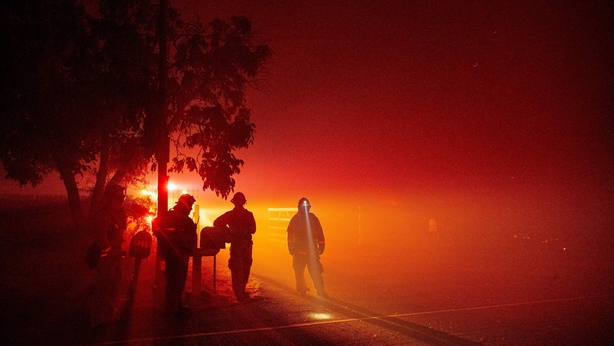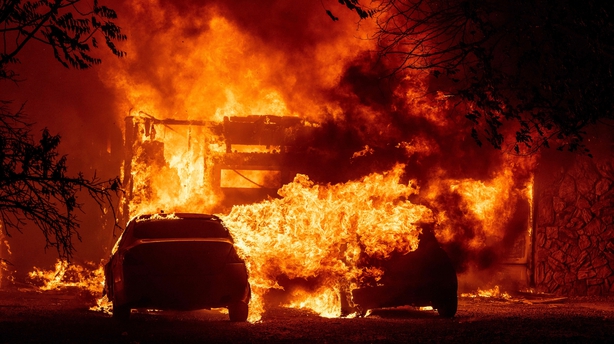California was in a state of emergency as dozens of fast-moving fires, many triggered by lightning strikes during an extreme heatwave, spread across the north and centre of the state.
The fires are threatening homes and causing the evacuation of thousands of people.
About 20 fires broke out in the area of Vacaville in the northern Bay Area, emergency services said, and were being collectively called the LNU Lightning Complex fire after the intense lightning storm that sparked the conflagration earlier in the week.
The fire had torched more than 30,000 acres near the wine country of Napa and Sonoma by this morning, media reports said.
Firefighters said that in total, fires across the state had torched some 120,000 acres.

Governor Gavin Newsom declared a state of emergency late last night to mobilise overstretched resources against "fires burning across the state which have been exacerbated by the effects of the historic West Coast heat wave and sustained high winds".
Some residents of Vacaville fled their homes dressed only in night clothes as the walls of fire surged across roadways, the San Francisco Chronicle reported, adding that firefighters were evacuating people suffering from burns.
Gas lines exploded at one house as the flames moved in, the paper said. Fire officials said the blaze was not contained and threatened some 1,900 structures in the area.

In the past week, California's Death Valley has been experiencing historic high temperatures, with the mercury rising as high as 54.4C.
Nearly 45m people across the west of the US are under an excessive heat warning or heat advisory.
The heatwave has put a massive strain on the state's power network, with blackouts leaving some 30,000 people without electricity according to the site Power outage.us.
Last week, brush fires near Lakes Hughes, just north of Los Angeles, burned 10,000 acres and prompted the evacuation of 500 homes.
Kinda sounding like a broken record with the ongoing intense heat and fire weather threats due to dry lightning in the Western states. However, today, there is an additional feature. Heavy rain in the Southern Sierra Mountains may produce localized flash flooding. pic.twitter.com/HBlikA5LS3
— National Weather Service (@NWS) August 18, 2020

